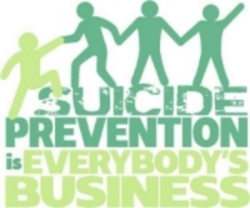Staff Spotlight: Dawn Penney BC-DMT, LPC, RYT
/This month we caught up with Dawn Penney, one of our licensed professional counselors, to find out how she combines dance, yoga and mental health, and how she keeps a "mindful" approach to life.
How did you get started in the field? What was your inspiration?
Dance held a healing power for me ever since childhood. While in high school, I had the direct opportunity to witness and help facilitate dance with children who simply opened up and came alive in class. I will always draw my inspiration from that time with those special children. I had planned to go to college for Child Psychology and then discovered, through a magical moment, the field of Dance Movement Therapy. I never waivered. I was then able to receive my undergraduate in Dance with a minor in Psychology and go on for my Masters degree in DMT before further education and licensure as a Professional Counselor, National Certified Counselor, Certified Trauma Professional and Registered Yoga Teacher. People often ask me what the connection between them all might be. But there is a deep connection of mind and body. I am very passionate and believe wholeheartedly, both personally and professionally, that for true health and healing, we cannot separate the two. I am so grateful for my 16 professional years in the field and continue to learn and grow from each experience.
What is your approach to holistic therapy?
Holistic to me speaks to the mind, body and spirit interconnection. I work from a present moment perspective and the client's experience and relationship to their challenge at that moment. I believe that the body and the breath are the only things we have available to us in the present moment and encourage clients to connect with both as often as able. The mind, body, spirit interconnection naturally brings to the table the balance in ones' life regarding physical, mental, emotional, spiritual and relational needs and how these are impacted by lifestyle to routine to communication approaches. I also include and believe that holistic invites creativity and alternate approaches to talking.
Tell us more about your upcoming Mindfull workshop.
I include Mindfulness techniques in each session and lead our Mindfulness, Meditation and Relaxation each Monday evening for the past 2.5 years here at the Village. I thought that during this time of year, both transitioning into Winter and the Holiday season, would be a great time to offer a space and time for our community to explore, deepen, experience their relationship to Mindfull vs. Mindful. The workshop will present simple concepts of Mindfulness with experientialism and take homes including; exploration of mindful eating, breath work for decreasing anxiety and increasing mood and focus; restorative yoga postures with guided imagery for experience of restoration prior to the upcoming seasons! Talking weaved in with a great deal of doing and being! It also can be a positive experience to share this time and space of mindfulness with a family member, friend or partner. Last year participants who invited others expressed that it was positive and powerful for them.
How can we incorporate mindfulness into our everyday lives?
I think a few great ways are to incorporate minute mindfulness with tasks that we already have in our routine, so it isn't "another thing" or increasing our feeling of overwhelm. For example, really pay attention to your senses and the feeling of your feet on the floor when you're brushing your teeth.
If you are interested in experiencing and understanding how to take a more mindful approach to your everyday life, especially during the upcoming holiday season, register and come join us Sunday, November 6th for Dawn’s Mindfull Workshop.



















